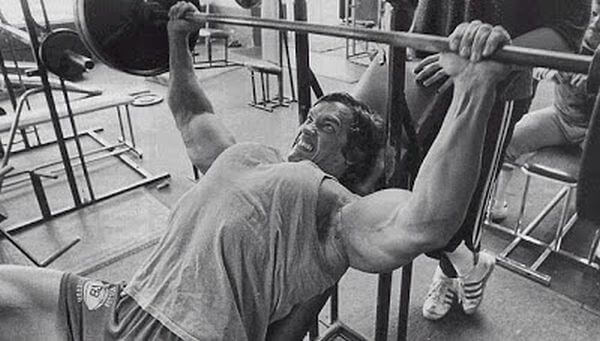Chest workouts are vital for more than just looks; they greatly contribute to overall physical fitness and functionality. A strong chest is essential for everyday activities like pushing and lifting, enhancing both strength and daily function.
Skipping chest day can lead to imbalances in strength and muscle development, which will compromise your overall fitness and performance levels.
Today, we’ll explore the many benefits of incorporating chest workouts into your training program and go over why you shouldn’t skip chest day. We will also talk about some of the best chest exercises you can add to your workout routine.
Whether you’re aiming to build strength, improve aesthetics, or enhance functional movement, prioritizing chest workouts can have a significant impact on your overall health and fitness goals
Exploring Chest Muscle Anatomy
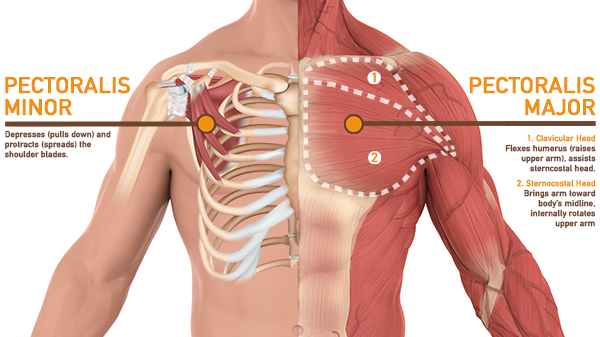
Before getting into the many benefits of chest workouts, we need to understand the anatomy of the chest muscles. The chest, or pectoral muscles, are divided into two main sections: the pectoralis major and the pectoralis minor.
Pectoralis Major
This large, fan-shaped muscle is responsible for most of the size in the chest. It consists of two heads: the clavicular head (upper chest) and the sternal head (lower chest).
Pectoralis Minor
Located underneath the pectoralis major, this smaller muscle aids in shoulder movement and stabilization.
To achieve all of the benefits of chest workouts, it’s crucial to incorporate exercises that engage the upper chest and exercises that engage lower chest, as well as the supporting muscles.
The Benefits of Chest Workouts
Understanding the power of chest workouts goes beyond just muscle growth. Chest training plays a key role in enhancing total-body strength for individuals of all fitness levels.
Chest workouts are essential for effective resistance training routines, offering a wide variety range of benefits that extend far beyond looks.
Building Overall Strength
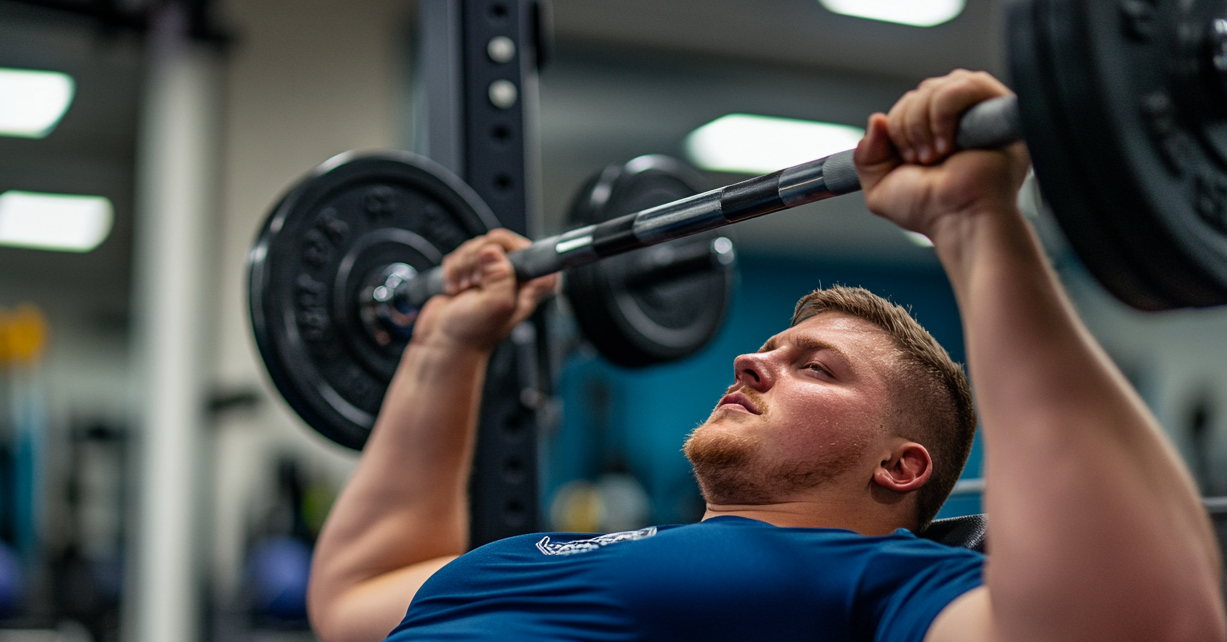
Many chest workouts engage multiple muscle groups, leading to a full-body impact. While the primary focus is on the chest muscles, exercises like bench presses and push-ups also work muscles in the shoulders, arms, and even the core.
Exercises like push-ups (close grip especially), chest presses, and dips are all exercises that will strengthen not just your chest, but your triceps too. Incline bench presses, and incline pec-flys are great if you are looking to build some extra shoulder strength while hitting chest.
Overall, by targeting many muscle groups, chest workouts contribute to a well-rounded strength training routine that improves overall physical performance and functional strength.
Functional Strength to Improve Everyday Life

Functional strength is the ability to perform daily tasks. The pectoral muscles play a large role in many upper body movements that are essential for everyday activities like lifting, pushing, and rotating. Without proper chest strength, even simple tasks such as lifting objects or pushing doors can become more challenging.
Chest strength helps in performing household chores and sports activities that involve throwing or arm control, such as gardening, cleaning, swimming, tennis, or martial arts. Strengthening these muscles through exercises like push-ups or bench presses makes everyday tasks easier and more manageable.
The chest muscles are also crucial for reaching movements, like reaching for items on high shelves or extending your arms forward. Strong pectoral muscles support shoulder joints, preventing strains, and help maintain good posture by holding your shoulders back and down. This makes movement patterns easier in various daily activities, improving your quality of life.
Helps Promote Shoulder Stability
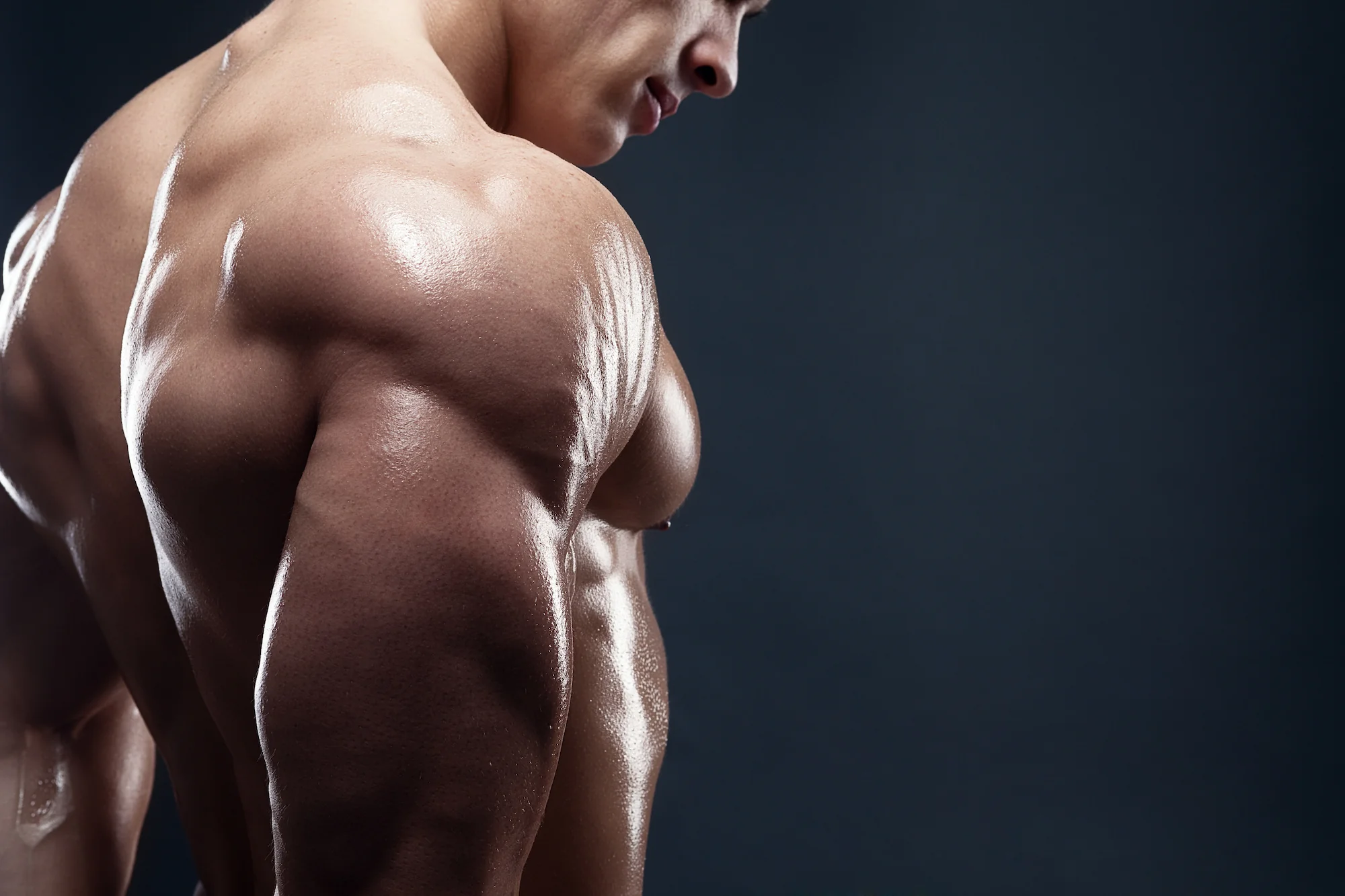
Chest workouts play a large role in promoting shoulder stability, which is important for maintaining proper joint function and preventing shoulder injuries.
The chest muscles, particularly the pectoralis major, contribute to shoulder stability by providing support and control during movements involving the shoulder joint. Chest workouts also often include movements that target the rotator cuff muscles, which help stabilize the shoulder joint.
By strengthening the chest muscles through exercise, you can improve shoulder stability and reduce the risk of common shoulder injuries such as shoulder impingement or instability.
Proper form and technique during chest exercises are essential for promoting shoulder stability and preventing injury. By maintaining proper form and avoiding excessive strain on the shoulder joints, you can safely and effectively strengthen the chest muscles while minimizing the risk of shoulder-related issues.
Improved Muscle Mass
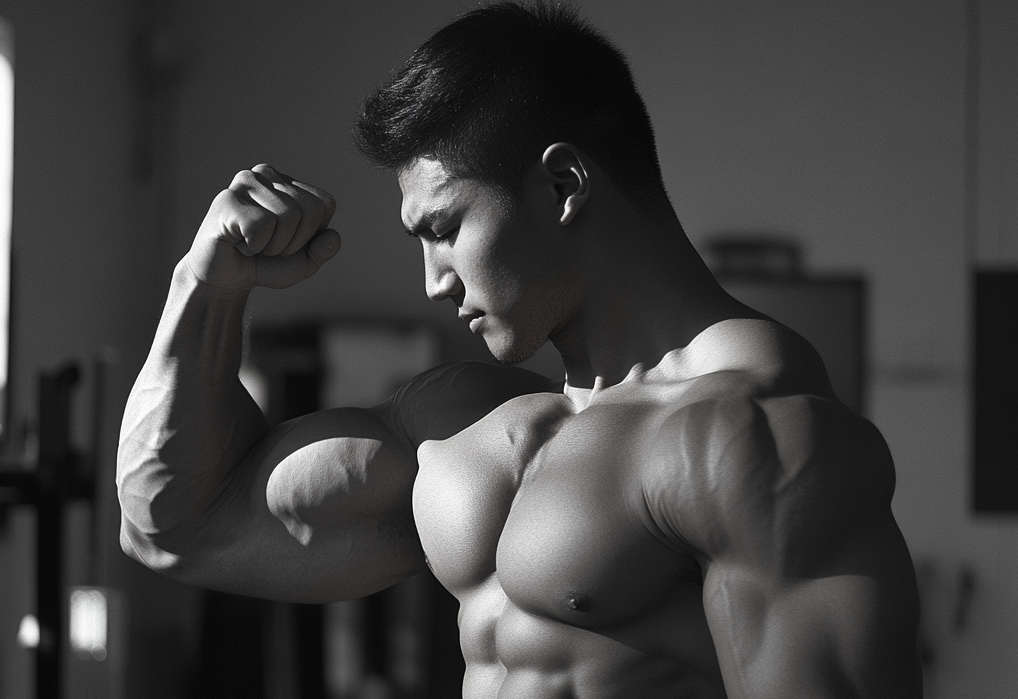
Chest workouts not only enhance aesthetic appeal but also offer significant functional benefits by targeting the pec muscles. These exercises promote muscle hypertrophy, where microtears in your muscle fibers lead to improved size after recovery.
Additionally, increased muscle mass boosts your basal metabolic rate (BMR), which means you will burn more calories naturally throughout the day. This helps with weight management and leads to faster fat loss.
Regular chest-focused workouts thus sculpt the upper body and significantly enhance overall strength and health, improving daily functionality and quality of life.
Improved Posture

A strong chest isn’t just about appearance—it’s crucial for posture, which is often overlooked in fitness. Good posture prevents musculoskeletal issues and promotes optimal breathing.
Consistent chest workouts, like push-ups or bench presses, strengthen pectoral muscles, which naturally pulls the shoulders back and opens the chest, improving posture over time.
Weak chest muscles can cause rounded shoulders and discomfort; strong pecs support upper body alignment, reducing strain on spinal joints and making movements efficient.
This can also counter screen-induced slouching. However, balanced muscle development, including back and core workouts, is essential for building proper posture.
Helps to Burn More Calories

Elevated caloric expenditure during chest workouts offers great benefits beyond simple fat loss. The demanding nature of these exercises, which involve compound movements that engage multiple muscle groups, increases the body’s energy demand.
This not only burns calories during the workout but also triggers Excess Post-exercise Oxygen Consumption (EPOC), leading to continued calorie burn even after training. High intensity chest workouts can lead to a prolonged excess post-exercise oxygen consumption (EPOC), enhancing metabolic processes that continue for hours after exercise.
Also, as mentioned earlier, building lean muscle mass in the chest through regular workouts raises the Basal Metabolic Rate (BMR), enhancing caloric burn even at rest. This contributes to weight management and fat loss over time.
Choosing the Best Chest Exercises
Barbell Bench Press

The barbell bench press is a classic compound exercise that targets specifically the pectoralis major. It also engages the shoulders and triceps, making it an effective upper body strength-building exercise.
How To:
- Lie flat on a bench with your feet planted firmly on the floor.
- Grip the barbell slightly wider than shoulder-width apart, with your palms facing away from you.
- Lift the bar off the rack and position it directly above your chest, arms extended.
- Lower the barbell slowly and under control until it touches your chest at mid-level.
- Press the barbell back up to the starting position, fully extending your arms.
- Repeat for the desired number of repetitions.
Dumbbell Chest Flyes
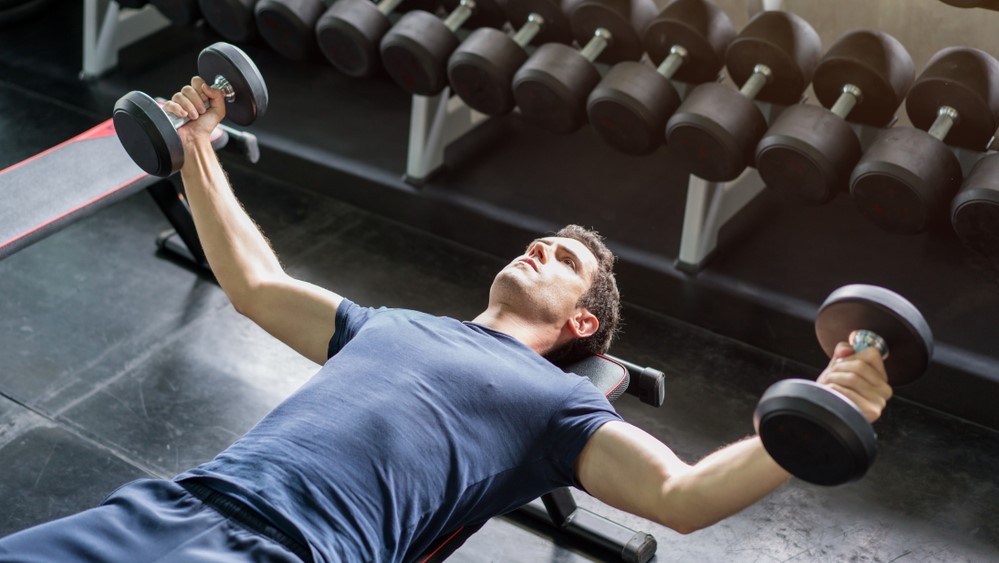
Dumbbell chest flyes target particularly the pectoralis major, to sculpt and define the chest. This exercise isolates the chest muscles, reducing the involvement of other muscle groups for more targeted muscle activation.
How To:
- Sit on the pec deck machine with your back flat against the pad and your feet firmly planted on the floor.
- Grasp a dumbbell in each hand and position your elbows at shoulder height.
- Keeping a slight bend in your elbows, open your arms out to the sides in a wide arc, lowering the dumbbells until you feel a stretch in your chest.
- Reverse the movement, squeezing your chest muscles to bring the dumbbells back together in front of you.
- Repeat for the desired number of repetitions.
Bent Forward Cable Crossover

The bent forward cable crossover is my favorite chest exercise, as it targets the pectoralis major from multiple angles. By performing the exercise in a bent-over position, you engage the chest muscles more intensely, leading to greater muscle activation and development.
How To:
- Stand in the middle of a cable crossover machine with the pulleys set at the highest position.
- Grab the handles with an overhand grip and take a step forward, bending slightly at the waist.
- Keeping a slight bend in your elbows, bring your arms down and across your body in a wide arc, squeezing your chest muscles at the bottom of the movement.
- Slowly return to the starting position, maintaining tension in your chest muscles throughout the movement.
- Repeat for the desired number of repetitions.
Dips for Chest

Dips are a bodyweight exercise that targets the chest muscles, along with the shoulders and triceps. By leaning forward and keeping your elbows flared out, you can emphasize chest activation during the exercise, taking the focus slightly off the triceps.
How To:
- Grip parallel bars or dip bars with your palms facing inward and your arms fully extended.
- Lean forward slightly and lower your body by bending your elbows until your upper arms are parallel to the ground.
- Keep your elbows flared out to the sides to emphasize chest activation.
- Press through your palms to push yourself back up to the starting position, fully extending your arms.
- Repeat for the desired number of repetitions.
Exploring Exercise Variations During Your Chest Workouts

Diversity and variation are the keys to success for achieving and maintaining impressive results during your chest workouts.
Introducing new exercises or modifying existing ones pushes the muscles out of their comfort zone, enhancing growth and strength gains. Regularly changing workout intensity, exercise order, or equipment types ensures continuous adaptation and prevents plateaus in muscle growth.
Alternating between exercises like barbell bench press, dumbbell flyes, and push-ups exercises different chest regions and secondary muscles, changing which muscles are being engaged.
Using different equipment types will also make your workouts more effective, by introducing new mechanical stressors on muscle fibers. This makes sure your muscles continuously adapt and grow, while adding a level of excitement to workouts.
How Often Should You Work Your Chest?
To effectively manage chest training and avoid overtraining, aim for 2-3 sessions per week, adjusting for workout intensity and your personal recovery needs.
Each session can vary—some may focus on heavy lifting for strength, others on higher reps for endurance. Just make sure to give yourself enough time for recovery by spacing workouts and listening to your body to prevent burnout and keep up the progress.
Conclusion
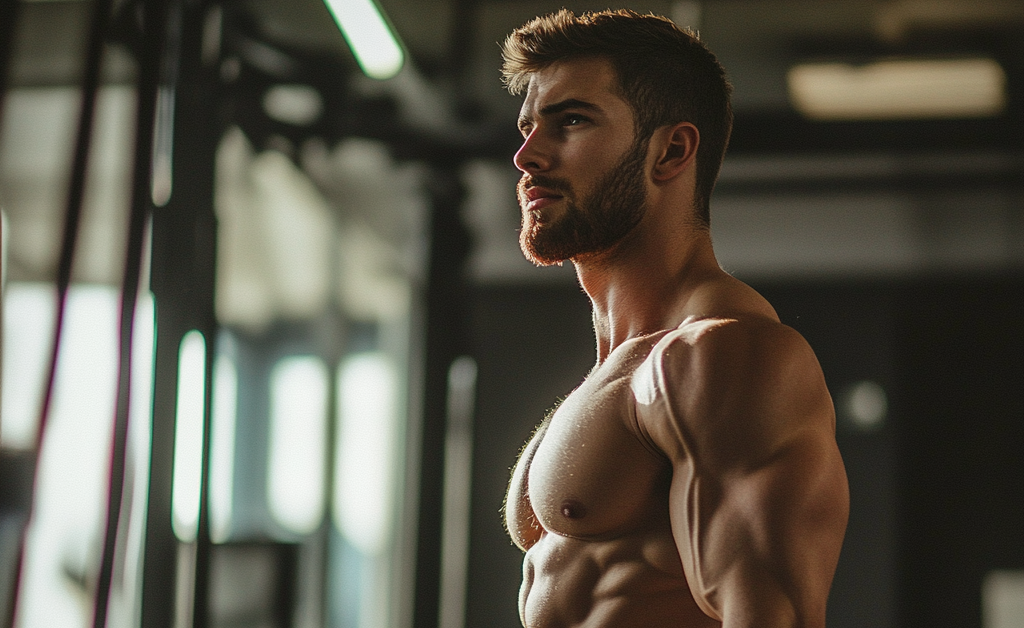
The importance of chest workouts extends far beyond the nice looks, as they help with every aspect of physical fitness and daily functionality. Whether you’re pushing a door, lifting groceries, or aiming for that next level of strength in the gym, a well-developed chest is a major key to success.
By doing a variety of exercises targeting both the pectoralis major and minor, you will also build your upper body strength and improve posture.
Skipping chest day not only slows down your progress towards a balanced physique but can also lead to muscle imbalances. So make sure to embrace the full spectrum of chest workouts to make sure you’re not just strong but functionally fit and ready to tackle life’s challenges with ease.
So, the next time you’re planning your workout routine, make sure chest day is not just included but highlighted as a key component of your overall fitness routine.
Sources
- Ferreira DV, Ferreira-Júnior JB, Soares SR, Cadore EL, Izquierdo M, Brown LE, Bottaro M. Chest Press Exercises With Different Stability Requirements Result in Similar Muscle Damage Recovery in Resistance-Trained Men. J Strength Cond Res. 2017 Jan;31(1):71-79. doi: 10.1519/JSC.0000000000001453. PMID: 27100318.
- Carbone JW, Pasiakos SM. Dietary Protein and Muscle Mass: Translating Science to Application and Health Benefit. Nutrients. 2019 May 22;11(5):1136. doi: 10.3390/nu11051136. PMID: 31121843; PMCID: PMC6566799.
- Stokes T, Hector AJ, Morton RW, McGlory C, Phillips SM. Recent Perspectives Regarding the Role of Dietary Protein for the Promotion of Muscle Hypertrophy with Resistance Exercise Training. Nutrients. 2018 Feb 7;10(2):180. doi: 10.3390/nu10020180. PMID: 29414855; PMCID: PMC5852756.
- Bahr R, Sejersted OM. Effect of intensity of exercise on excess postexercise O2 consumption. Metabolism. 1991 Aug;40(8):836-41. doi: 10.1016/0026-0495(91)90012-l. PMID: 1861633.
- Bahr R, Ingnes I, Vaage O, Sejersted OM, Newsholme EA. Effect of duration of exercise on excess postexercise O2 consumption. J Appl Physiol (1985). 1987 Feb;62(2):485-90. doi: 10.1152/jappl.1987.62.2.485. PMID: 3558208
- Bahr R, Grønnerød O, Sejersted OM. Effect of supramaximal exercise on excess postexercise O2 consumption. Med Sci Sports Exerc. 1992 Jan;24(1):66-71. PMID: 1548999.

